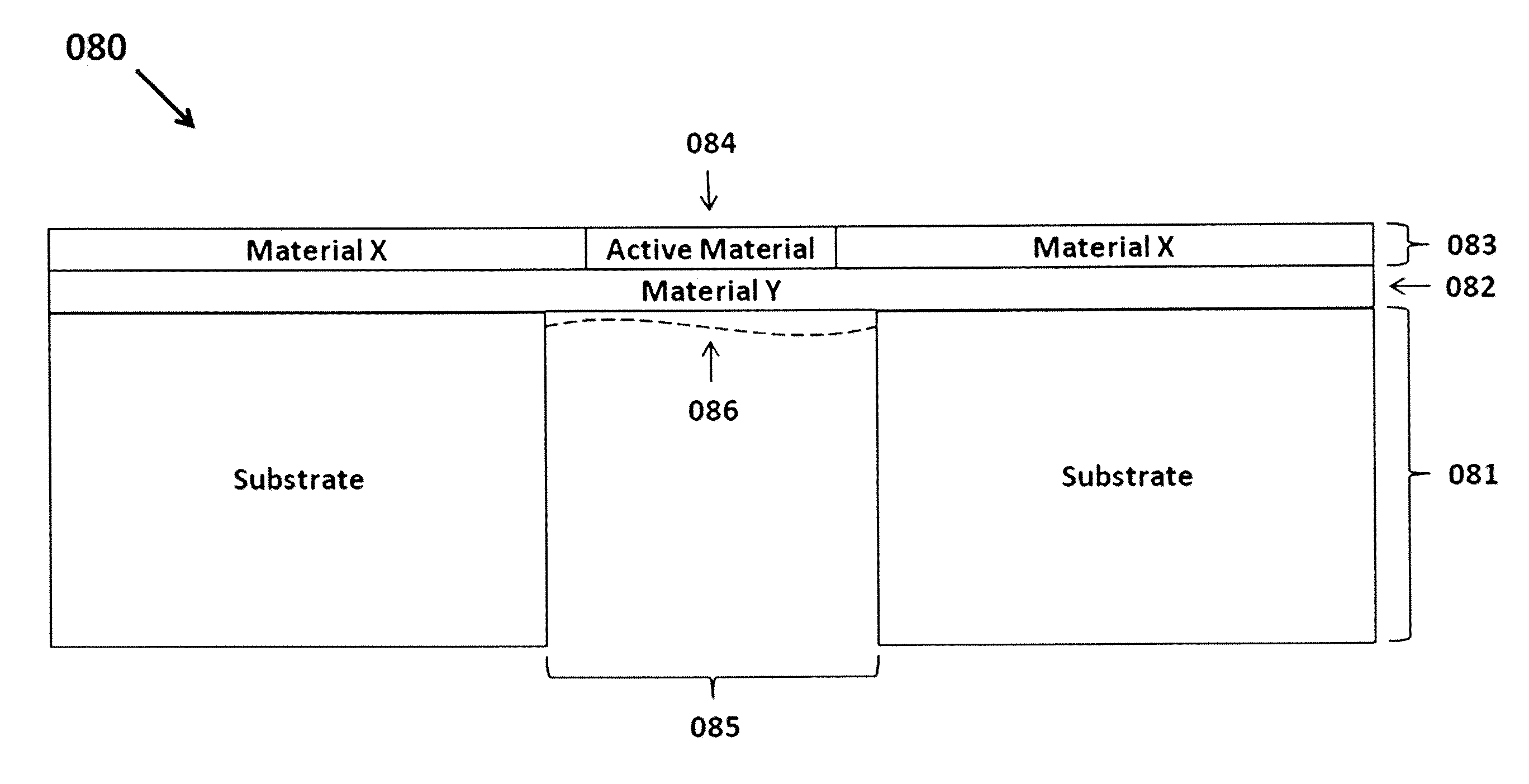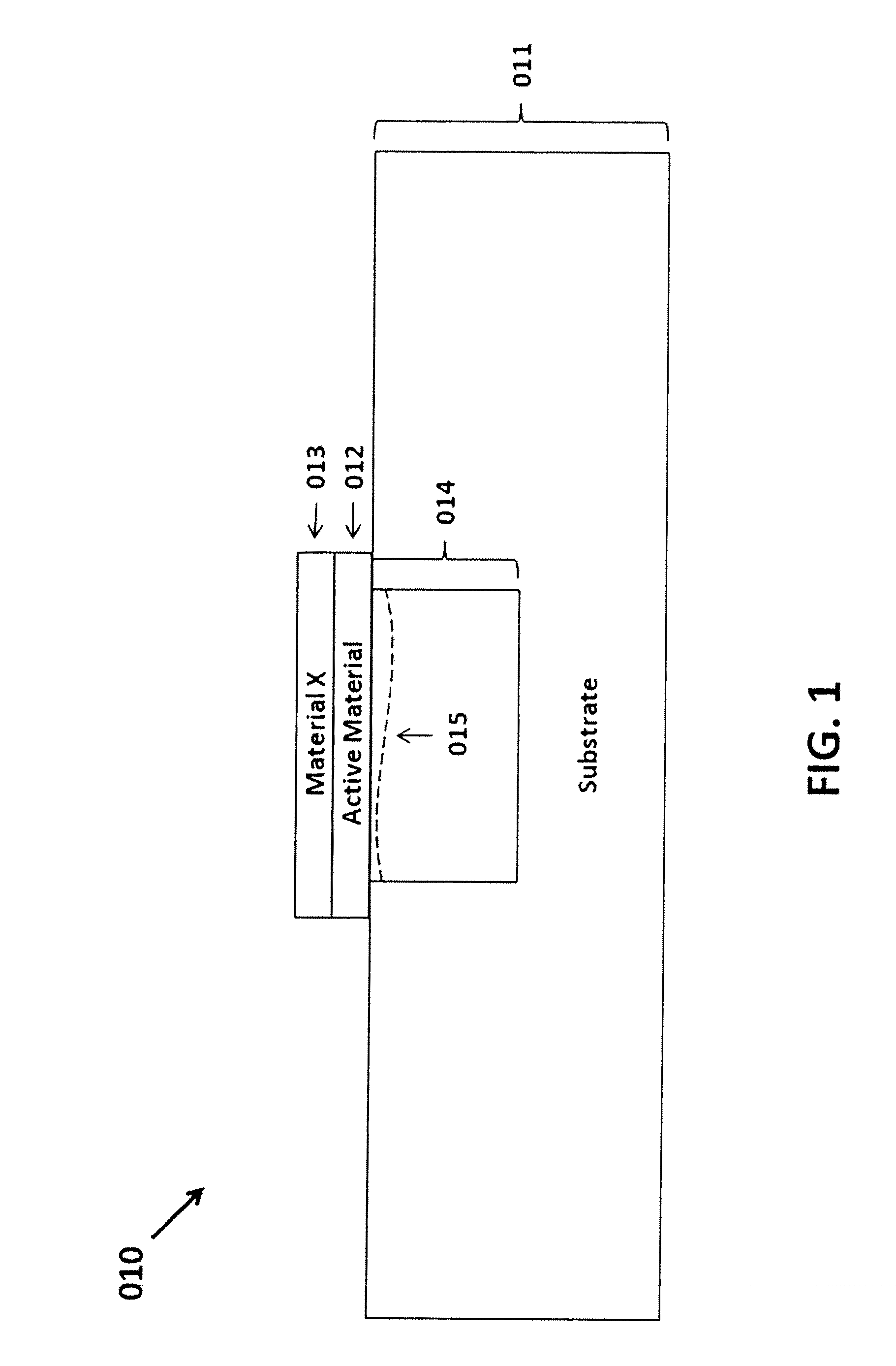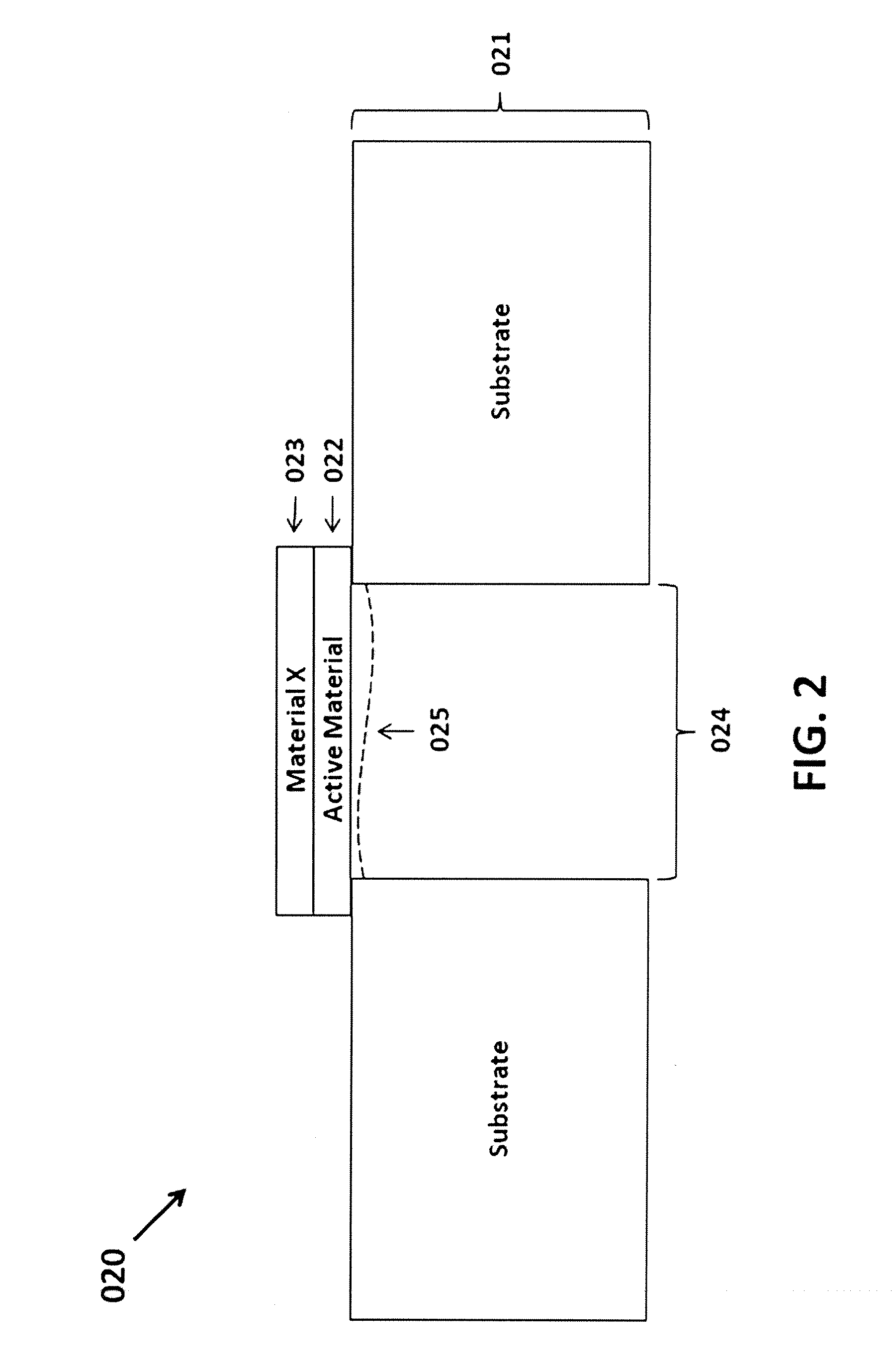Strained semiconductor materials, devices and methods therefore
a technology of semiconductor materials and strain, applied in the field of semiconductor devices involving strained semiconductor materials, can solve the problems of low operating speed, high material cost, and limited wavelengths larger than about 1500 nm, and achieve the effect of reducing the relaxation of the strain
- Summary
- Abstract
- Description
- Claims
- Application Information
AI Technical Summary
Benefits of technology
Problems solved by technology
Method used
Image
Examples
example 2
Photodetectors
[0125]Following the general method of Example 1, a photodetector can be made on an active layer that is strained either prior to device fabrication or as the final step in the device fabrication process.
[0126]For example, a strained metal-semiconductor-metal (MSM) photodetector can be fabricated by adding a metal evaporation and photoresist lift-off lithography process after the method of Example 1 is followed to apply strain to an active layer meant to serve as the absorption medium in the device. In one specific process example, a spray-coating system can be used to deposit photoresist on all accessible material surfaces after the release etch is done for the strain transfer. Then, after photoresist exposure and developing to form electrode patterns, a metal electrode stack (e.g. 150 Å of Titanium followed by 350 Å of Gold) can be evaporated non-selectively on the wafer surface. A metal lift-off process consisting of soaking the wafer in a solvent (e.g. acetone) to d...
example 3
Light-Emitting Diodes
[0128]Following the general method of Example 1, a light-emitting diode (LED) can be made on an active layer that is strained either prior to device fabrication or as the final step in the device fabrication process. For example, a strained pin LED can be fabricated by combining the methods of Example 1 and Example 2 for the case of a pin photodetector.
[0129]As an alternate device example, a pn LED can be fabricated by combining the methods of Example 1 and Example 2 for the case of a pin photodetector but removing the intrinsic semiconductor from the material stack. In the case of epitaxially-obtained films, the starting active layer in this case could be comprised of two epitaxially-grown semiconductors, one of n-type doping and the other of p-type doping. Alternately, the starting active layer could be a single semiconductor of either n- or p-type doping. A subsequent ion implantation or other doping process can be done to introduce the opposite doping specie...
example 4
Photonic Crystals
[0130]Following the general method of Example 1, a photonic crystal can be made on an active layer that is strained either prior to device fabrication or as the final step in the device fabrication process.
[0131]For example, a strained photonic crystal can be fabricated by incorporating in the active layer pattern of Example 1 an additional pattern of holes of a desired size and arrangement to yield a photonic crystal in the active layer. In this approach, the hole pattern comprising the photonic crystal and the containing active layer pattern in which the holes are to be incorporated would be defined and etched simultaneously. Subsequent processing could proceed as normally described in the method of Example 1, with release etching done as normal or modified to also act through the photonic crystal holes in the active layer. The latter approach may be chosen to enhance the release etch rate, uniformity, mechanical integrity, and other factors of the active layer an...
PUM
 Login to View More
Login to View More Abstract
Description
Claims
Application Information
 Login to View More
Login to View More - R&D
- Intellectual Property
- Life Sciences
- Materials
- Tech Scout
- Unparalleled Data Quality
- Higher Quality Content
- 60% Fewer Hallucinations
Browse by: Latest US Patents, China's latest patents, Technical Efficacy Thesaurus, Application Domain, Technology Topic, Popular Technical Reports.
© 2025 PatSnap. All rights reserved.Legal|Privacy policy|Modern Slavery Act Transparency Statement|Sitemap|About US| Contact US: help@patsnap.com



